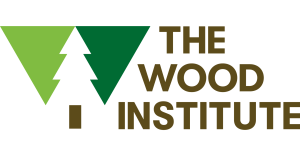
Buildings consume nearly half the energy produced in the United States, use three-quarters of the electricity and account for nearly half of all carbon dioxide (CO2) emissions. Due to these impacts, building for environmental sustainability is critical. This carbon footprint course explains the principal methods and tools that are used to assess carbon footprint in the context of building materials. It includes a primer on product terminology, including life cycle assessment (LCA), environmental product declarations (EPDs), carbon footprint, embodied carbon, and whole building LCA (WBLCA) tools. It also highlights sustainable architecture examples. Additionally, you’ll learn how to track that wood comes from sustainable forests in North America and why demand for wood products supports investment in forest management.
By the end of this course, you should be able to do the following:
- Explain what a carbon footprint is in the context of building materials.
- Describe the difference between Life-Cycle Assessment (LCA), Environmental Product Declaration (EPD), and whole building LCA.
- Describe different whole building LCA tools and how they can be used to develop a whole building carbon footprint.
- Discuss what is and is not included in a wood EPD, and why.
- Describe the biogenic forest carbon cycle and ways to track and assure forest sustainability in North America.
